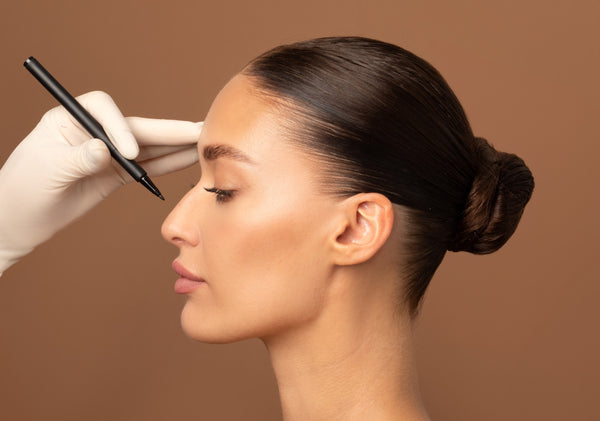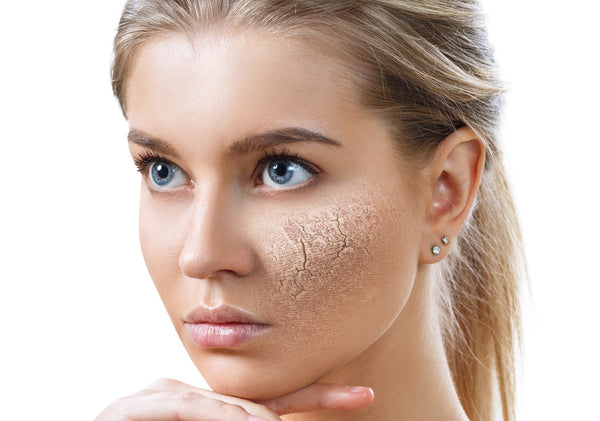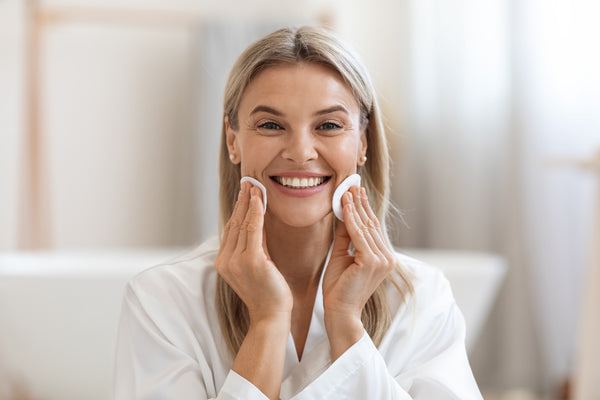Should You Start Dry Brushing Your Face? Learn More Here

Dry Brushing For Your Face–Is It Good For You?
Have you heard about dry brushing your body to exfoliate away dry skin and help stimulate blood flow and circulation? Our guess is probably yes! But is it possible to get the same results by dry brushing your face, too?
Continue reading through this guide as we briefly discuss what is dry brushing, what are the benefits of dry brushing, and whether or not it’s a good idea to do on your face.
What Is Dry Brushing?
Let’s begin with a brief explanation of what dry brushing is before we dive further into its advantages and if you should incorporate it into your skincare routine.
Dry brushing is an ancient technique that uses a dry, stiff-bristled brush to detoxify and exfoliate the skin and promote better circulation.
It’s done in a circular, massaging motion across the surface of the skin and is typically done once a day in the morning before showering.
Can You Dry Brush Your Face?
While dry brushing is commonly done to the limbs and trunk of the body, you may be wondering if it’s possible to do it to the face as well.
Well–just like your body can benefit from stronger blood flow and better circulation, in most cases, your face can too! With this in mind, dry brushing doesn’t have to be exclusive to the body–when done with care and caution, you can also feel free to dry brush your face.
Many claim that it can even help to tone the facial skin, exfoliate dry skin, reduce puffiness and swelling, and brighten your complexion.
However, given how sensitive and delicate the skin on your face is compared to elsewhere on your body, you need to be particularly careful and gentle when doing so. Read on below to see some of the benefits you can experience from dry brushing and a step-by-step guide on how to dry brush your face properly for the best results.
What Are the Benefits of Dry Brushing?
 Now with a better idea of what dry brushing is and knowing that it is possible to do to your face, let’s go over some of the main advantages of this practice and why you would consider adding it to your self-care routine.
Now with a better idea of what dry brushing is and knowing that it is possible to do to your face, let’s go over some of the main advantages of this practice and why you would consider adding it to your self-care routine.
While there is still not a ton of research out there that proves the purported benefits of dry brushing, some studies have shown that it is effective for a few key uses, which we’ll describe below.
Exfoliating Dry Skin
Possibly the biggest reason why people dry brush is to exfoliate the dry skin on their body to reveal a softer, smoother surface.
Some point out that dry brushing can be particularly effective in colder climates during the winter where dry, flaky skin can clog pores and become irritating or itchy.
So, dry brushing is good at removing dead skin and flakiness. Thus, it may be effective when used on the face to prevent clogged pores and breakouts.
Additionally, many like the idea that dry brushing the face gets rid of the dead skin buildup on the surface, allowing your skincare products like our DMAE Antioxidant Day Moisturizer or Hyaluronic Acid Night C-Complex to penetrate deep into the skin for best results.
Preventing Fine Lines & Wrinkles
 There are many different treatments for getting rid of fine lines and wrinkles, though some are promoting dry brushing as an at-home remedy given the exfoliation it provides.
There are many different treatments for getting rid of fine lines and wrinkles, though some are promoting dry brushing as an at-home remedy given the exfoliation it provides.
Other treatments like laser ablation and skin peels are all used to deeply exfoliate the skin and promote the regeneration of new cells for a more youthful appearance. However, we would opt for a more non-invasive approach to remove dry and dead skin cells by regularly using our Exfoliating Enzyme Scrub. In addition, dry brushing your face every day could provide you with similar results.
It is important to note that at this point, there isn’t substantial evidence to prove this to be true.
Promoting Lymphatic Drainage
Many people have found that dry brushing is a good way to promote lymphatic drainage in your body and help it get rid of toxins.
As a reminder, your lymphatic system is a crucial element of your immune system, which you may have recognized from swollen lymph nodes when you are feeling ill.
Plus, proponents of dry brushing claim that it can also serve the lymphatic system by helping it to drain properly, which can improve the appearance of cellulite and prevent swelling of the limbs or face.
Even still, evidence hasn’t yet shown that dry brushing does activate the lymphatic system or helps with detoxifying the skin.
Easy, Affordable, & Natural
Above all, dry brushing is a natural wellness treatment that you can do yourself from the comfort of your own home. Plus, investing in a quality dry brush won’t put you out hundreds of dollars, and it’s a tool you can reuse for months.
Although, dry brushing is a very approachable and natural self-care practice that is simple to learn. It’s something you can begin incorporating into your daily routine immediately.
How to Dry Brush Your Face
 If you have weighed the pros and cons and decided that you want to try out dry brushing your face, make sure to do so with care and attention.
If you have weighed the pros and cons and decided that you want to try out dry brushing your face, make sure to do so with care and attention.
Continue reading through the following steps in order to dry brush your face properly.
- Find a Quality Facial Dry Brush
- Start with a Clean, Dry Face
- Work from the Top, Down
- Rinse Your Face
- Apply Moisturizers
If you have already started to dry brush your body, you need to keep in mind that you’ll need a different, specialized brush to use on your face.
While body dry brushes are typically stiff-bristled, the tool you’ll use on your face needs to still be firm, but have much more fine and soft bristles.
As a reference, the dry brush you find to use on your face should feel similar to the makeup brushes you use each day. Many also point out the importance of using a brush with natural bristles, not synthetic ones.
Before you begin dry brushing the area, you need to start with a clean and dry face.
Make sure you don’t apply any makeup or product to your face beforehand, as you’ll be exfoliating the skin throughout this process and getting rid of any buildup anyway.
So, you don’t want to waste any product by applying it before you get started.
You’ll begin at the top of your face at the forehead, working your way down with the brush. Make slow brushstrokes throughout, but still maintain consistent and gentle pressure.
The idea is that you’re starting at the farthest point from your heart, working on building up your blood flow and circulation.
From the top of your forehead to the eyebrows, start at the center point of your face, and brush outwards in light sweeping motions towards your hairline. Then, repeat on the other side working in the opposite direction.
After that, you’ll move on to each of the cheekbones, working in gentle sweeps down to the chin.
Once you’re done with the brushing, wash your face in warm water to rinse away any dry skin or flakes that are still left on the surface.
This will help reveal the smooth, supple surface that you’ve created from your dry brushing.
Lastly, you need to apply a moisturizing cream or serum to your face in order to lock in the moisture and keep your skin feeling soft and smooth.
Otherwise, you could end up drying out your face too much and creating the opposite effect of what you intended.
Final Thoughts–Is Dry Brushing Your Face Worth It?
 After reading through this guide, it’s clear to see that there are some great benefits to dry brushing. And even if it seems like dry brushing is a new fad, it’s interesting to note that it’s an ancient technique that links back to ancient Indian, Greek, and Japanese civilizations.
After reading through this guide, it’s clear to see that there are some great benefits to dry brushing. And even if it seems like dry brushing is a new fad, it’s interesting to note that it’s an ancient technique that links back to ancient Indian, Greek, and Japanese civilizations.
While dry brushing proponents claim it helps detoxify the body and promote better circulation and blood flow, there still isn’t a ton of research to prove these claims. However, we found that it does do a good job of exfoliating the skin and getting rid of dry flakiness.
Of course, those with sensitive skin need to be careful about not being too abrasive and causing more harm than good. Plus, facial skin is thinner and more delicate by nature, so we recommend to make sure you’re using a dry brush meant for the face, and following the proper steps in order to get your intended results.












